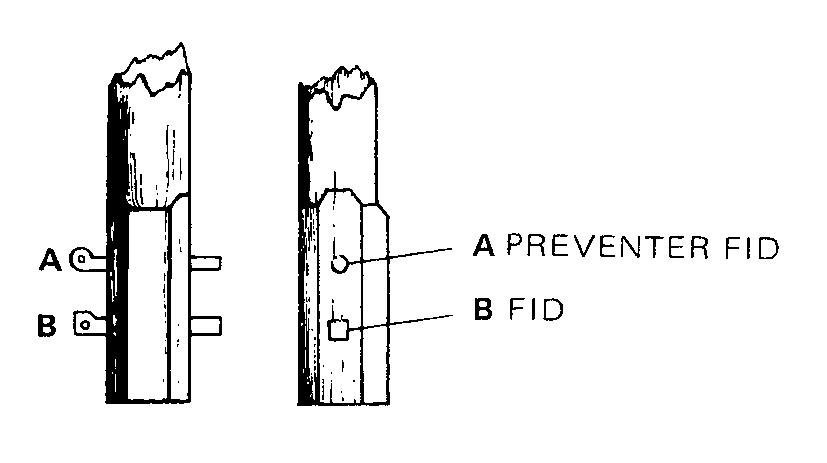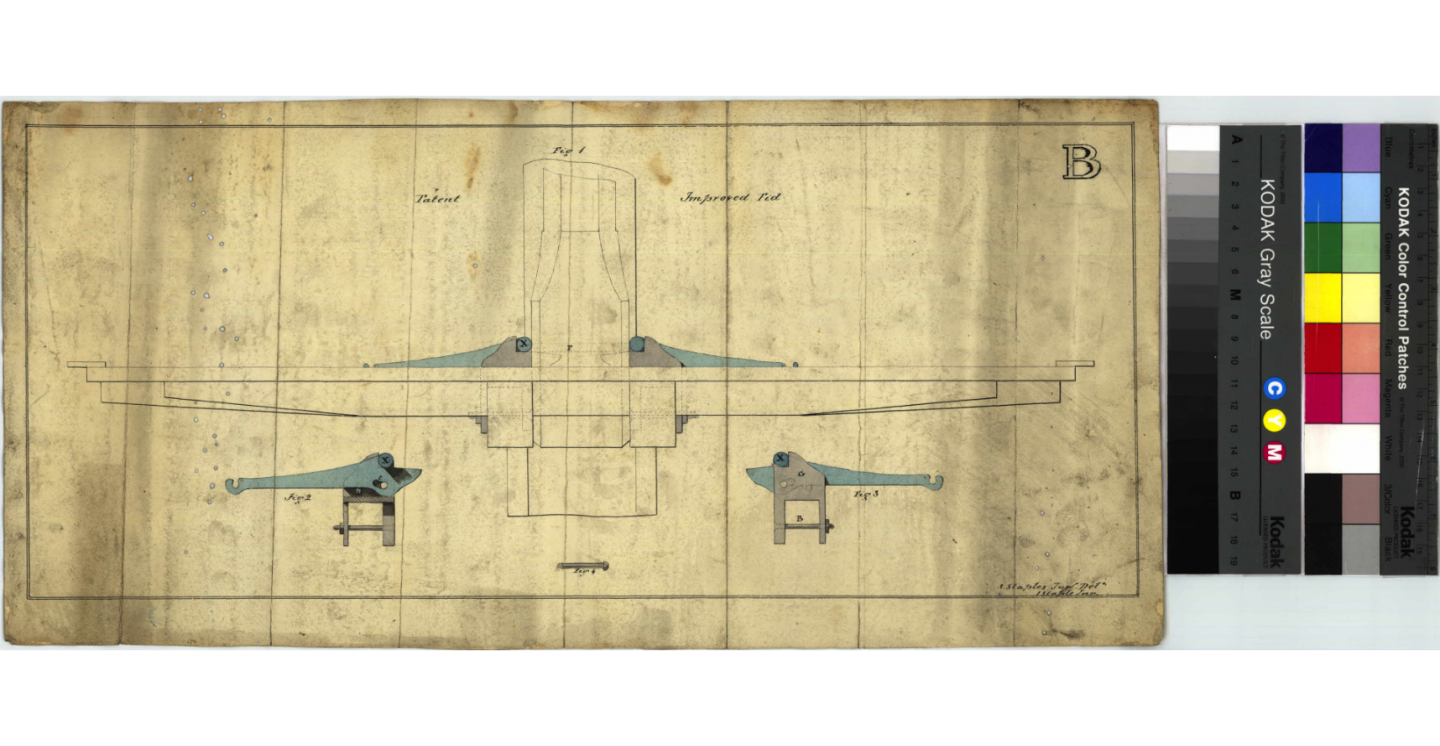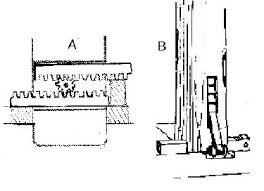-
Posts
5,951 -
Joined
-
Last visited
Content Type
Profiles
Forums
Gallery
Events
Everything posted by BANYAN
-

HMCSS Victoria 1855 by BANYAN - 1:72
BANYAN replied to BANYAN's topic in - Build logs for subjects built 1851 - 1900
Thanks for the laughs guys; the levity is much appreciated while we are in lockdown Seriously though, back to the product: yep the spacing was out between three of the holes. Greg, I did use a a rotary table for the test piece but I made the error (about half way through) of miscalculation/set-up in only progressing 20 degrees instead of 30 degrees. Shows you really need to concentrate. I am having some difficulty finding the appropriate stock (tube) to use for the mizen mast spiderband. I need brass tube of 5.75mm ID, or something close to it with enough meat in the walls to ream it out a little. I have searched the online stores here in Australia, and some overseas with no luck. Does anyone happen to have a short length of something suitable that I could use? Edit: or point me to somewhere I can et it? cheers Pat- 1,013 replies
-
- gun dispatch vessel
- victoria
-
(and 2 more)
Tagged with:
-

HMCSS Victoria 1855 by BANYAN - 1:72
BANYAN replied to BANYAN's topic in - Build logs for subjects built 1851 - 1900
...and here I was thinking it was a band of spiders (mates to those guys that do rigging) cheers Pat- 1,013 replies
-
- gun dispatch vessel
- victoria
-
(and 2 more)
Tagged with:
-

HMCSS Victoria 1855 by BANYAN - 1:72
BANYAN replied to BANYAN's topic in - Build logs for subjects built 1851 - 1900
Just for Rob (and others if interested ) I have made a start on the spider bands for the three masts. I experimented with several methods but settled on using my tried and trusted soldering a brass tube into a brass washer as the starting point. Fiinding a brass tube that is of the correct diameter is the hardest as the OD can be thinned if need be, or the hole in the washer can be reamed out a touch. Below are two shots of my progress. The one to the right (as viewing it) was my test piece where I used a mild steel washer to work out how to set-up the mill to allow me to drill the 0.8mm holes equally spaced (for the belaying pins. The specification is silent on the type or material used for the spiderbands - the belaying pins were specified to be brass. I am going to leave them brass but equally, they could have been painted white. I will part the inner part on the lathe to the same height as the test piece once I finish polishing it. Points to anyone who can spot the error in the test piece. cheers Pat- 1,013 replies
-
- gun dispatch vessel
- victoria
-
(and 2 more)
Tagged with:
-
Very clean and crisp work Dave. Funny how all those distractions come along oh so regularly cheers Pat
- 143 replies
-
I'll jump on the rollin' band wagon - centre stain for me. I think the others are too deep and hide some of the detail/overpowering. cheers Pat
-
Wow - impressive work Brian! Some extraordinary work there, and I love the attention you are giving to the plumbing - that adds some lovely detail to the model. cheers Pat
-

HMCSS Victoria 1855 by BANYAN - 1:72
BANYAN replied to BANYAN's topic in - Build logs for subjects built 1851 - 1900
Thanks Roger, appreciate your very kind comments. I think you have convinced me that I will go with grey cotton/linen/rayon (not sure which yet) to emulate the wirerope. I think your comment re scale provided that last little 'nudge' I needed to settle on a method. cheers Pat- 1,013 replies
-
- gun dispatch vessel
- victoria
-
(and 2 more)
Tagged with:
-

HMCSS Victoria 1855 by BANYAN - 1:72
BANYAN replied to BANYAN's topic in - Build logs for subjects built 1851 - 1900
Ah Rob, you embarrass me; I don't think my work is that great when compared to some of the 'masters on here. I am somewhat 'becalmed' at the moment due to research etc, but have a made a start on the spars and some of the fittings. I will post a couple of small updates soon. cheers Pat- 1,013 replies
-
- gun dispatch vessel
- victoria
-
(and 2 more)
Tagged with:
-
That's really nice work Rob. Do you know if they used a 'trick stopper' to release the anchor? cheers Pat
- 3,560 replies
-
- clipper
- hull model
-
(and 2 more)
Tagged with:
-
Nice work with the 'plug', look forward to seeing all the planking in-situ Steven. What you have done looks great. Pat
-
Grant, this an era in which a lot of things were happening. The type of fid may have been one of several designs and possibly influenced whether the tops were iron or wood. Also, by this time preventer fids were also in vogue, these were iron round rod put in about 8" or so above the fid - see attached set-up from Lees page 7. I have also attached another commonly used one in Clippers of this era from Underhill, Masting and Rigging the Clipper and ..., Plate 6. Another from the Rigsarkivet Plan C460b, and a line drawings for a patent jacking fid (cannot remember the source). The fid arrangement provided by Alan is another option for topmast fids. Sorry to confuse you further, but as you see there were a lot of options in this period. My suggestion is that if a reasonably simply rigged vessel, use a simplified fid arrangement unless you can find better or more specific info. cheers Pat
-
Take a bow Rob, very nice work (and moving along with some speed). cheers Pat
- 3,560 replies
-
- clipper
- hull model
-
(and 2 more)
Tagged with:
-

NAIAD 1797 by Bitao - 1:60
BANYAN replied to Bitao's topic in - Build logs for subjects built 1751 - 1800
Impressive! Love the tooling. cheers Pat -
As John has said Tim, a clever and what could prove a very useful tool - I can certainly see the value in removing that external step of having to use the calculator. I currently generate a look-up table at the scale I am working, but 5 times out of 10 the scale is not posted where I am currently working. How do you see the input of the scale? A set of preprogramed buttons, or input via an external source? cheers Pat
-
These were specified in the Contract for the building of HMCSS Victoria (1855) - so in use by then - Wefalck has probably nailed the possible date range. cheers Pat
-
You're a fast worker Rob, you will have caught me up soon and I am 5 years in Your model is looking great, very elegant and nicely finished. cheers Pat
- 3,560 replies
-
- clipper
- hull model
-
(and 2 more)
Tagged with:
-
I have seen that before Eberhard, but it still amazes me to see the very effective sails you produced for your Botter. cheers Pat
-

HMCSS Victoria 1855 by BANYAN - 1:72
BANYAN replied to BANYAN's topic in - Build logs for subjects built 1851 - 1900
Hi druxey, not at all While wire would be more authentic, I think cotton will serve just as well if I can get the right colour and lay. I'm just being a little stubborn in trying for additional authenticity. cheers Pat- 1,013 replies
-
- gun dispatch vessel
- victoria
-
(and 2 more)
Tagged with:
-

NAIAD 1797 by Bitao - 1:60
BANYAN replied to Bitao's topic in - Build logs for subjects built 1751 - 1800
Another great model. As the others have said, if not happy, repeat! As with your other builds, your joinery is so clean and crisp. I will enjoy following along with this one as well. cheers Pat -

HMCSS Victoria 1855 by BANYAN - 1:72
BANYAN replied to BANYAN's topic in - Build logs for subjects built 1851 - 1900
Hi Keith, thanks for your continued interest and input - it helps keep me honest and ensure i fully examine all possible options. From the limited experimentation so far, I have found you can pre-stretch it, but it is very difficult to keep it straight while working it. The real issue I am finding though, is to keep enough tension on it to make it look right, puts toom much strain on the very small (at 1:72) parts I have manufactured, especially the Rigmaiden lanyards. I will continue to experiment in the hope I can make it work, but I think I am almost resigned to using cotton. cheers Pat- 1,013 replies
-
- gun dispatch vessel
- victoria
-
(and 2 more)
Tagged with:
-
Rob, this is very impressive. I am sitting back and monitoring/watching as there is not much I can contribute to this fabulous build - you guys seem to be all over the research and you are doing a fine job with the model. cheers Pat
- 3,560 replies
-
- clipper
- hull model
-
(and 2 more)
Tagged with:
-

HMCSS Victoria 1855 by BANYAN - 1:72
BANYAN replied to BANYAN's topic in - Build logs for subjects built 1851 - 1900
Thanks for the further input folks, some considerations to ponder further. Keith - polyester stretches too much. Long staple cotton is good (doesn't stretch and is strong) and yes, I have to accept it is a little more porous and therefore prone to rot easier. I am thinking of using 'tatting' cotton (lacework) as it tends to have a longer lay to better simulate wire. From what I have read so far, back then some wires were wormed, oiled then parcelled and painted with white lead paint (but only one author suggests that). I know from my day in the Navy, we tended to leave wire rope open/uncovered as much as possible but kept them well oiled (boiled linseed) - this allowed us to inspect them a lot easier. Other authors, such as Underhill, suggests that wirerope used with stays and standing rigging, apart from the eye, the main run was left open, but from about 2-3 feet above the lead block/hole, and then the remainder to where they were secured, were wormed and served (NOT parcelled) and well oiled (linseed oil). I must admit, when burning the clear protective coating from the control wire I have, leaves a very authentic oiled look - I just wish it didn't require the amount of tension it needs to look/sit right. cheers, and appreciate the suggestions. Pat- 1,013 replies
-
- gun dispatch vessel
- victoria
-
(and 2 more)
Tagged with:
-
Looking good Greg. What glue do you use to hold down those large strips of brass? cheers Pat
-
You are finding some very nice photos there Greg. cheers Pat
- 1,090 replies
-
- showcase models
- vendetta
-
(and 2 more)
Tagged with:
About us
Modelshipworld - Advancing Ship Modeling through Research
SSL Secured
Your security is important for us so this Website is SSL-Secured
NRG Mailing Address
Nautical Research Guild
237 South Lincoln Street
Westmont IL, 60559-1917
Model Ship World ® and the MSW logo are Registered Trademarks, and belong to the Nautical Research Guild (United States Patent and Trademark Office: No. 6,929,264 & No. 6,929,274, registered Dec. 20, 2022)
Helpful Links
About the NRG
If you enjoy building ship models that are historically accurate as well as beautiful, then The Nautical Research Guild (NRG) is just right for you.
The Guild is a non-profit educational organization whose mission is to “Advance Ship Modeling Through Research”. We provide support to our members in their efforts to raise the quality of their model ships.
The Nautical Research Guild has published our world-renowned quarterly magazine, The Nautical Research Journal, since 1955. The pages of the Journal are full of articles by accomplished ship modelers who show you how they create those exquisite details on their models, and by maritime historians who show you the correct details to build. The Journal is available in both print and digital editions. Go to the NRG web site (www.thenrg.org) to download a complimentary digital copy of the Journal. The NRG also publishes plan sets, books and compilations of back issues of the Journal and the former Ships in Scale and Model Ship Builder magazines.








